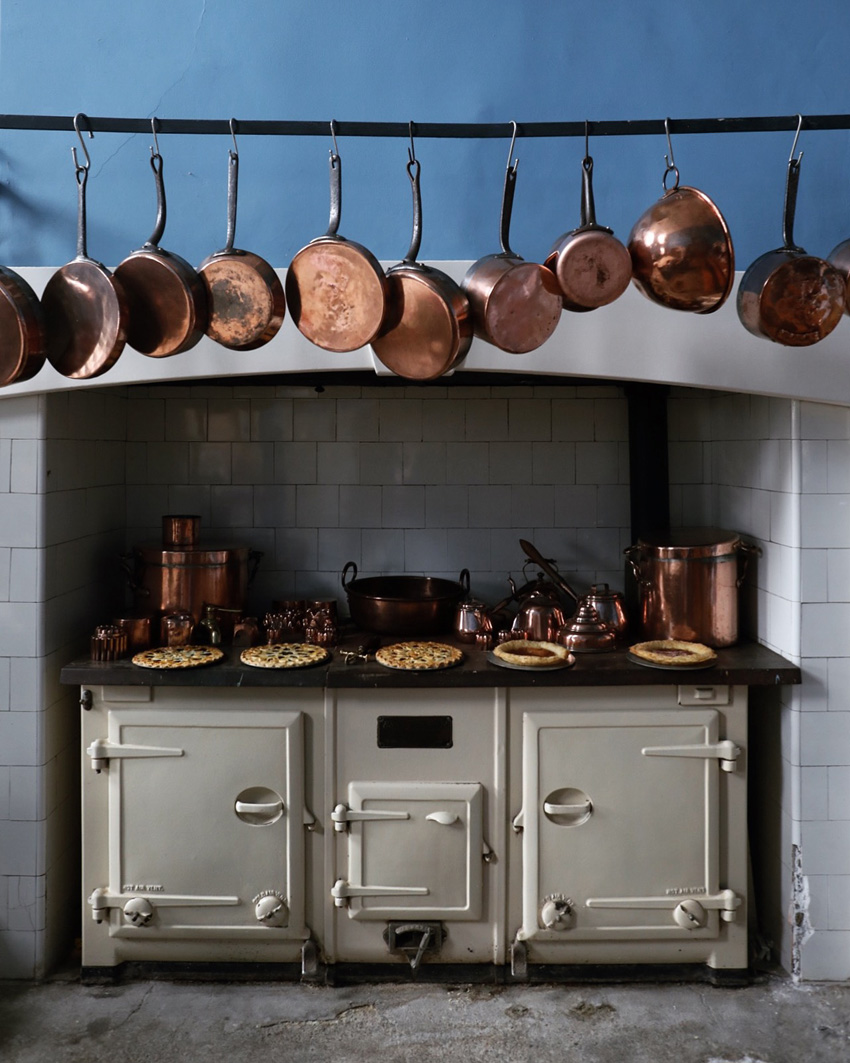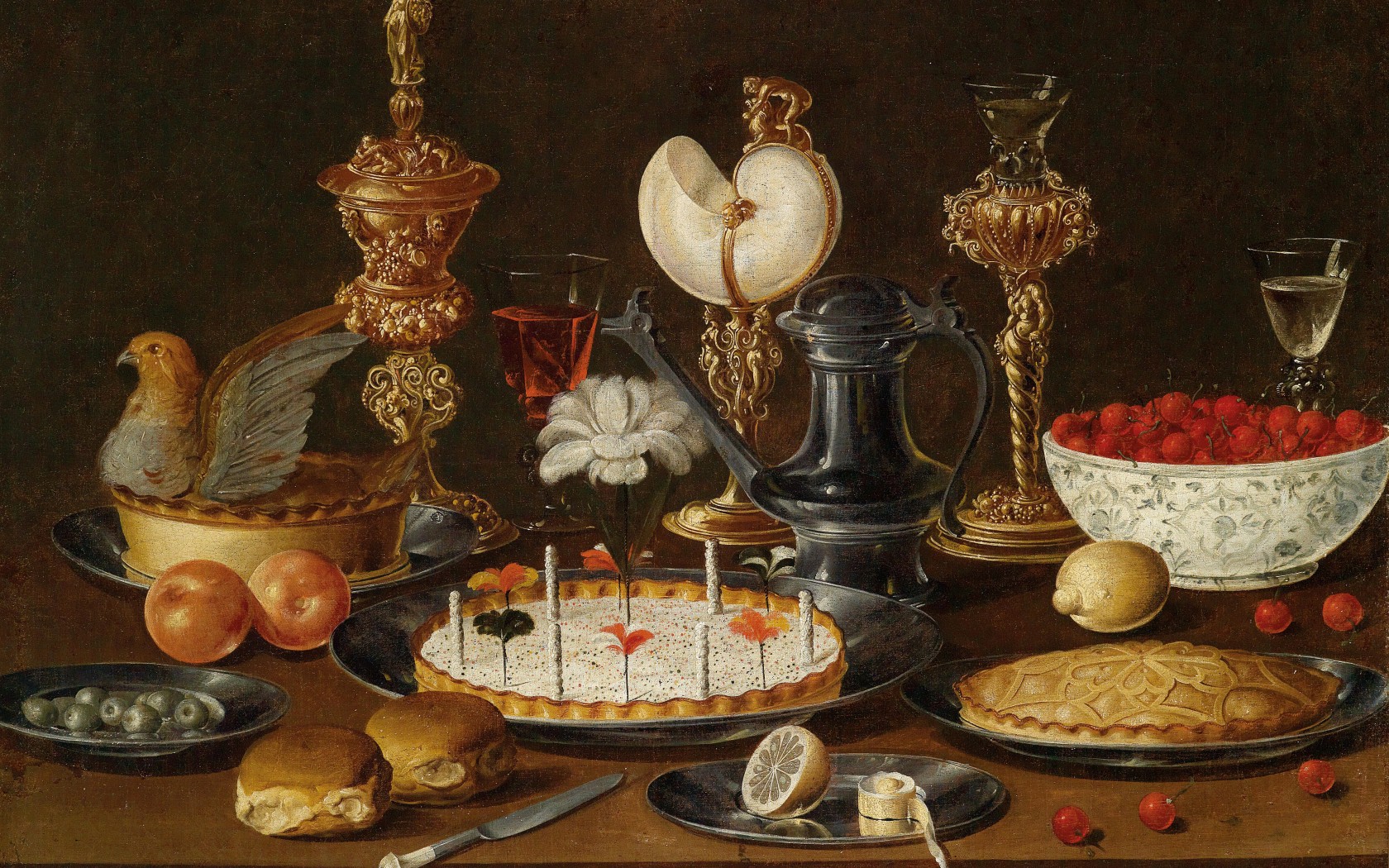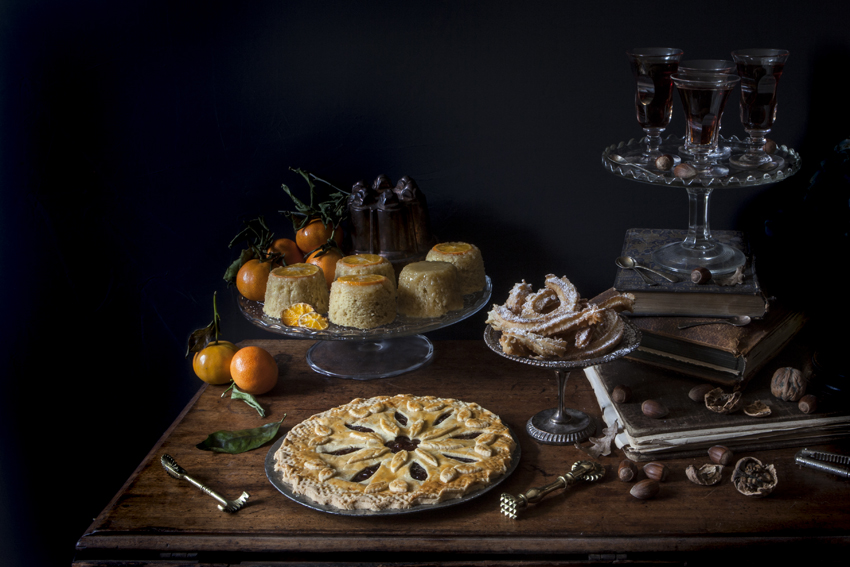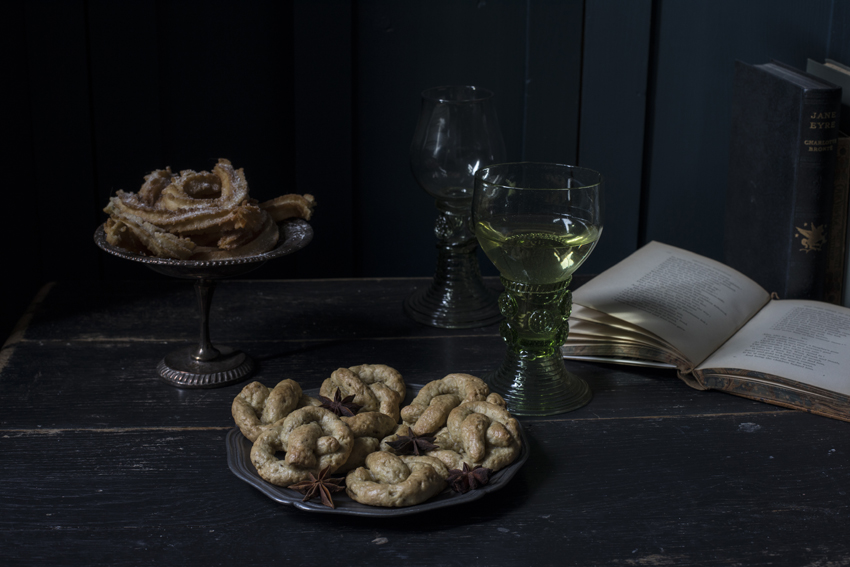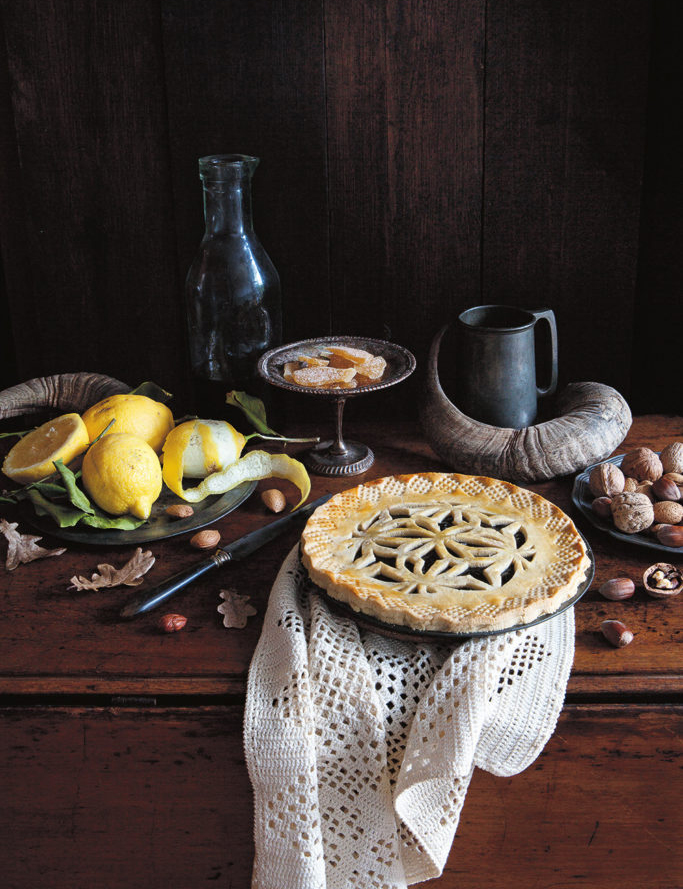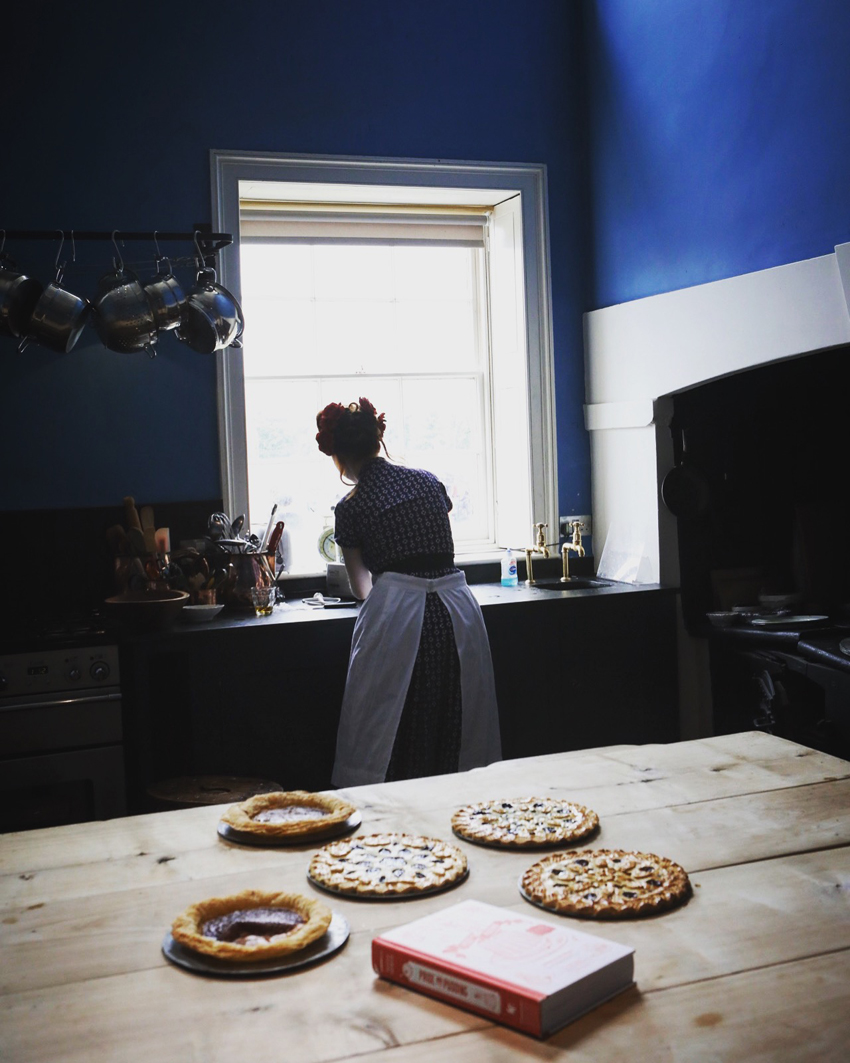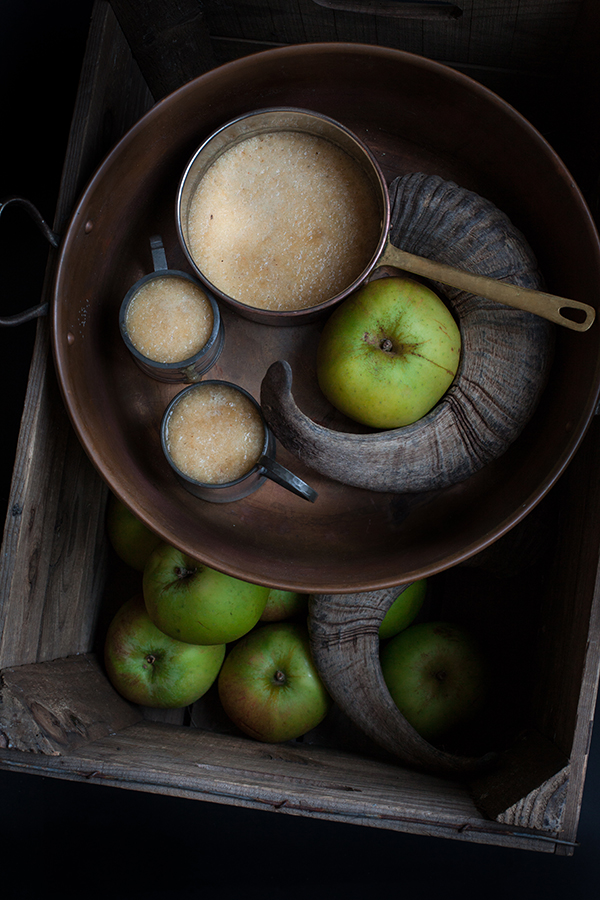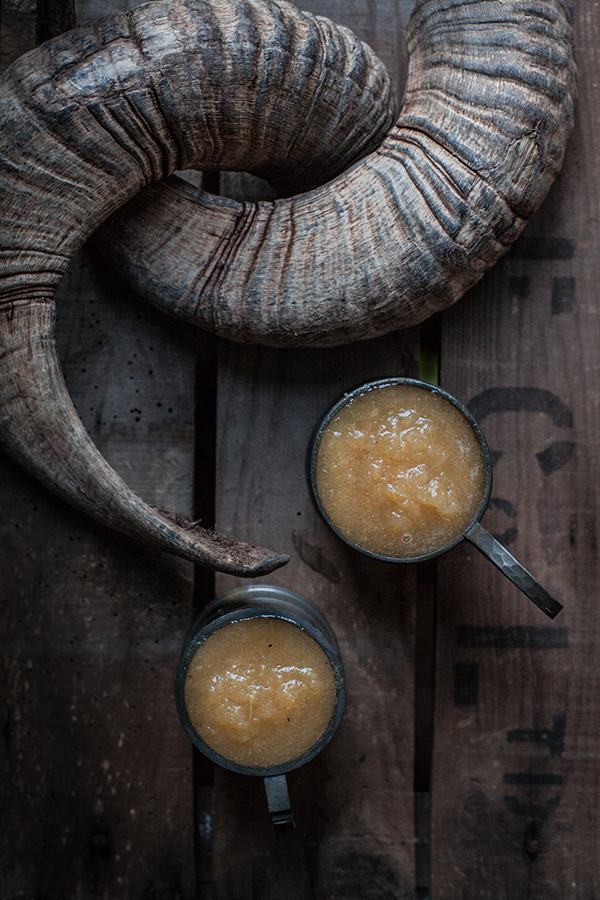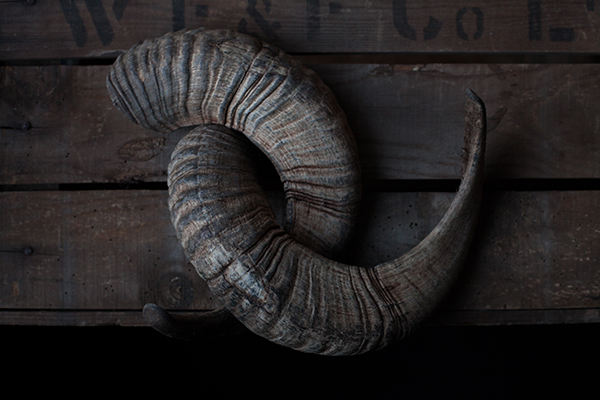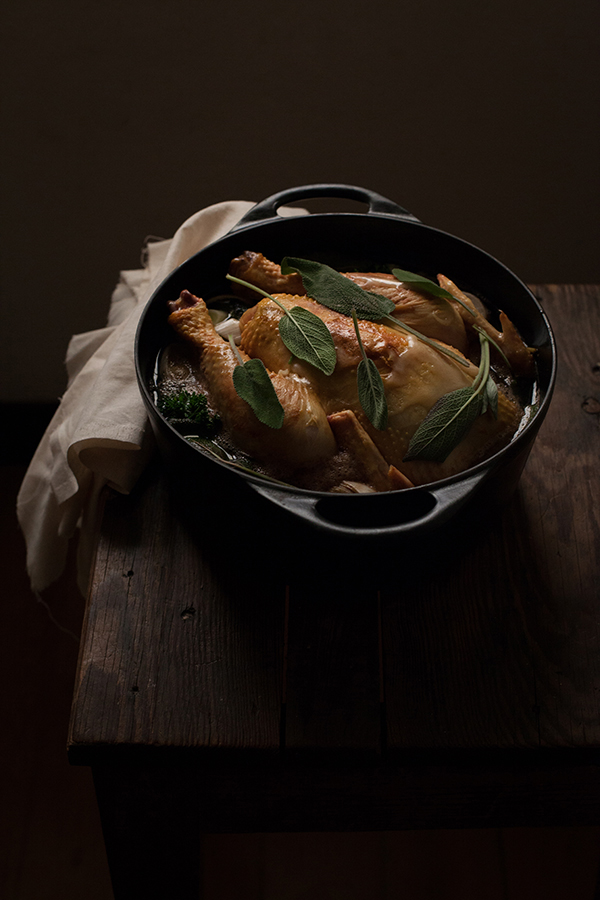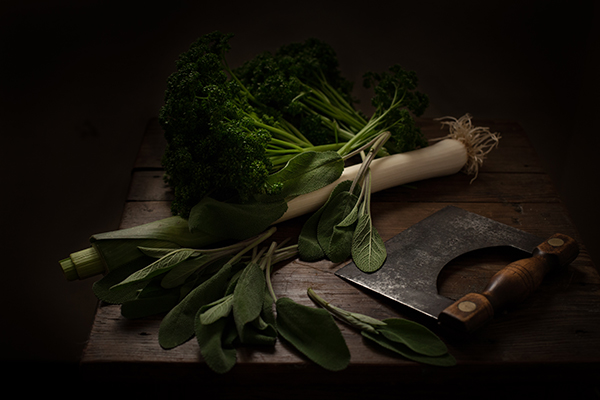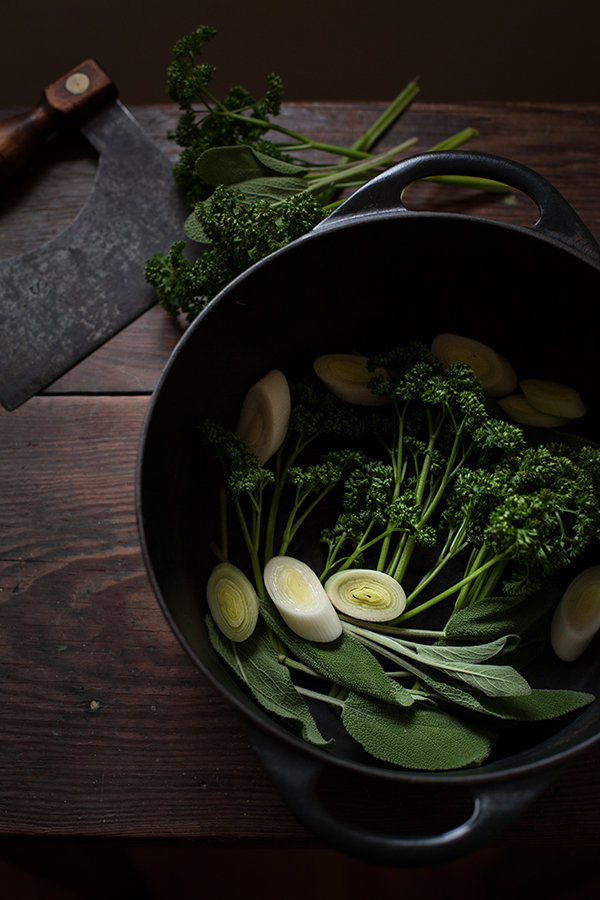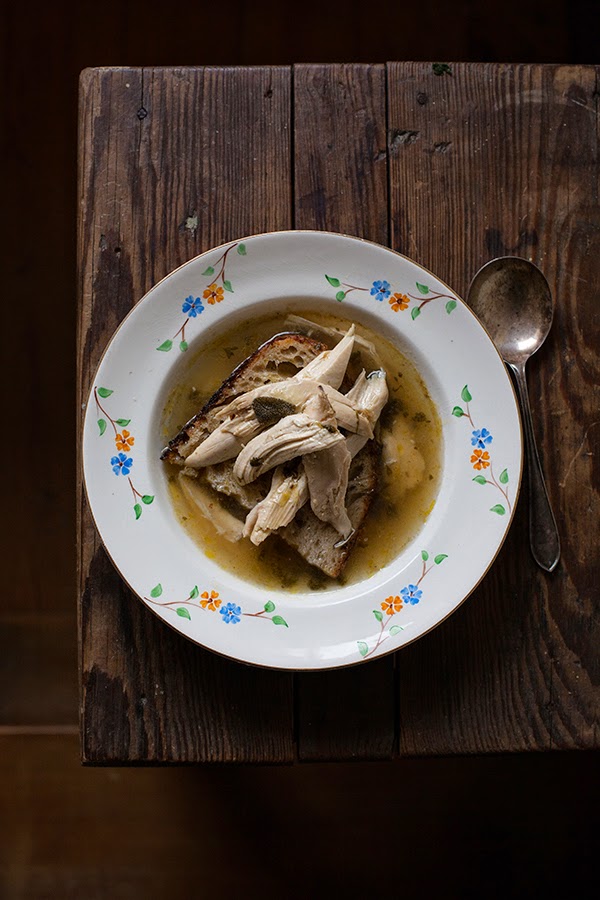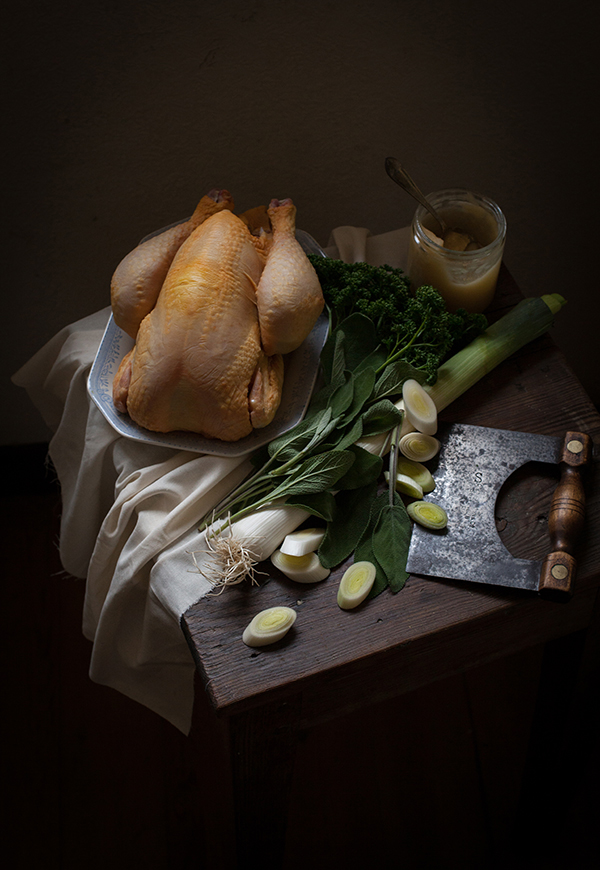The post Renaissance Tarts – Cooking Class & Talk appeared first on Miss Foodwise.
]]>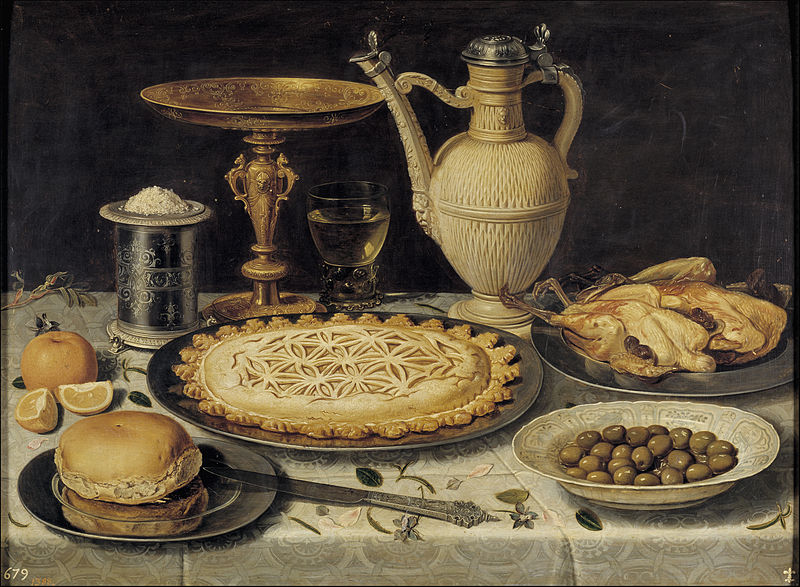
Clara Peeters, Antwerp, 1611
New date for this workshop:
Friday 28 july 2017 – 14h – in the Historical Kitchen of Port Eliot House, St-Germans, Cornwall UK.
Learn about these intricately decorated tarts and their meaning, see how they were made using the original tools.
Growing up in Flanders, Belgium, it feels as if still life paintings have always been a big part of my life. My entire childhood I’ve sat at the dinner table at my parents house, gazing at a dark still life painting with a pumpkin which hung on the wall on the other side of the room. Nothing makes sense in the image, why has the pumpkin such a prominent place on this formal dining table, and why is it on a formal table with china cups in the first place. A pumpkin like this would be more at home in a kitchen scene, on a bare wooden table, ready to be cut, its pips taken out, and the flesh diced for soup or stew.
Mysteries like these in food paintings have always intrigued me. One of my first books was a shabby old artbook with renaissance still life paintings by the Dutch and Flemish masters. All the food in the paintings had such carefully thought out symbolism. Bread indicates humility and catholic faith, a peach means truth and oysters mean lust. A glass of wine with little liquid in it symbolises the fragile nature of life but also wealth. In combination certain fruits and foods can tell a story. A paining with peaches and a butterfly mean hope and faith. Oysters or oyster shells in the vicinity of a woman in a painting means that the woman is promiscuous. If a bun of bread is near, it means she has lost her humility and has given in to the desires of the flesh. Heavy stuff no? An abundance of fish symbolises the catholic faith, but a cat near the fish means doubt, the painting could mean a warning not to take everything for granted when it comes to faith (big lessons to learn here).
But what those still lives also teach us is what people ate in the past and what utensils they used. Clara Peeters (image top page) shows the extraordinary skill of the chef who created that stunning centrepiece of a tart which is finished with a delicately carved pastry lid. This painting shows the best example of a renaissance tart. The tarts I have become infatuated by.
For my workshops I aim to tell you about the traditions and symbolism of these tarts and how to make them. You will learn an old pastry recipe and how to carve the lid using an authentic 18th century tool.
This summer I will be teaming up with Port Eliot festival and I will be teaching a class about these renaissance tarts in the historic kitchen of Port Eliot house. It’s a unique opportunity to cook historical food in a matching kitchen. I’m very excited about this and hope to see some of you there 28 july!
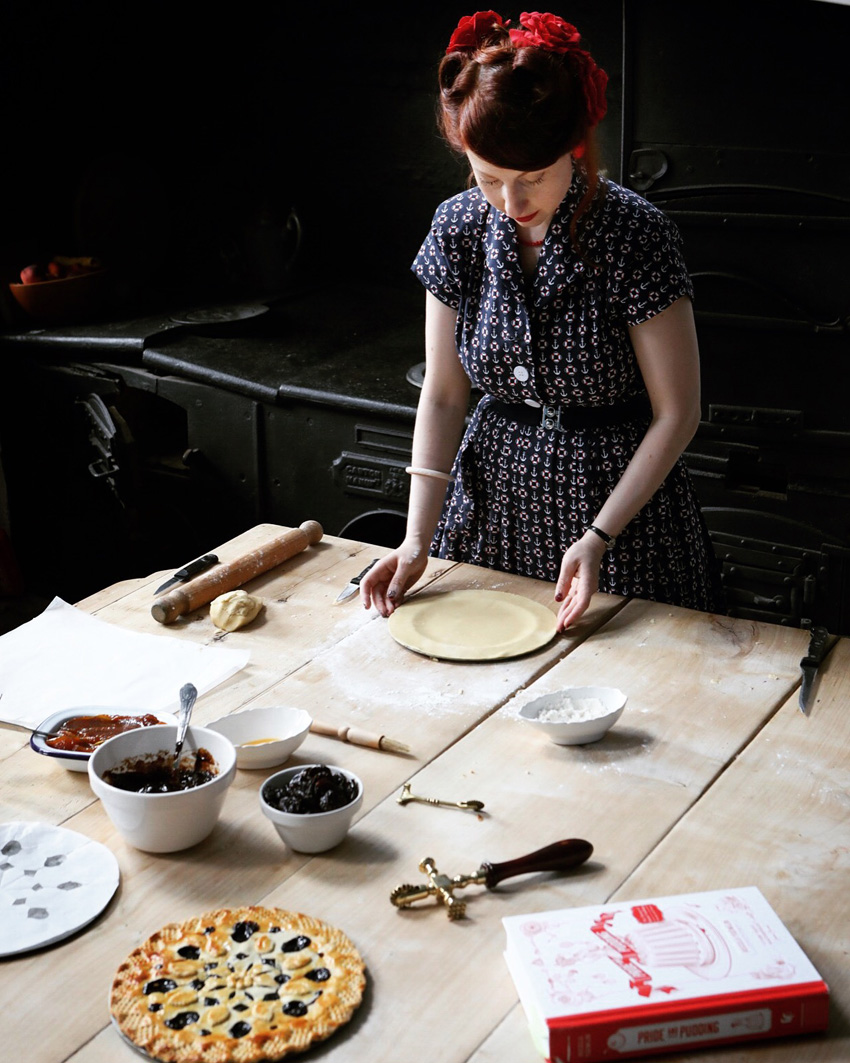
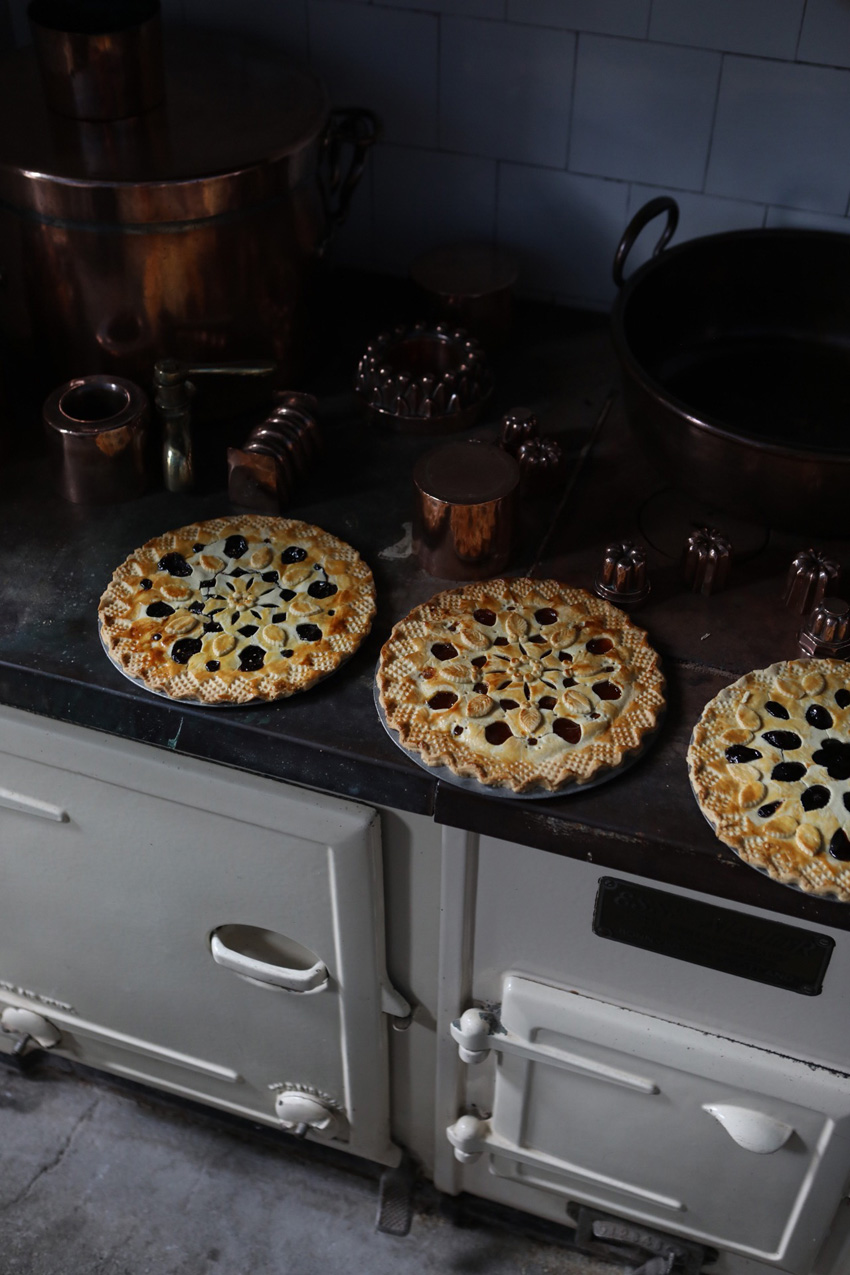 Want me to come and speak/teach at your event or cookery school?
Want me to come and speak/teach at your event or cookery school?
I am available to teach this class wherever you like, get in touch to talk about classes that suit your interest. My most popular classes or talks are Renaissance tarts, historical puddings, and the history of British food.
You might also like this recipe for a quince tart here >
The post Renaissance Tarts – Cooking Class & Talk appeared first on Miss Foodwise.
]]>The post We shall drink Lambswool on the Twelfth Night appeared first on Miss Foodwise.
]]>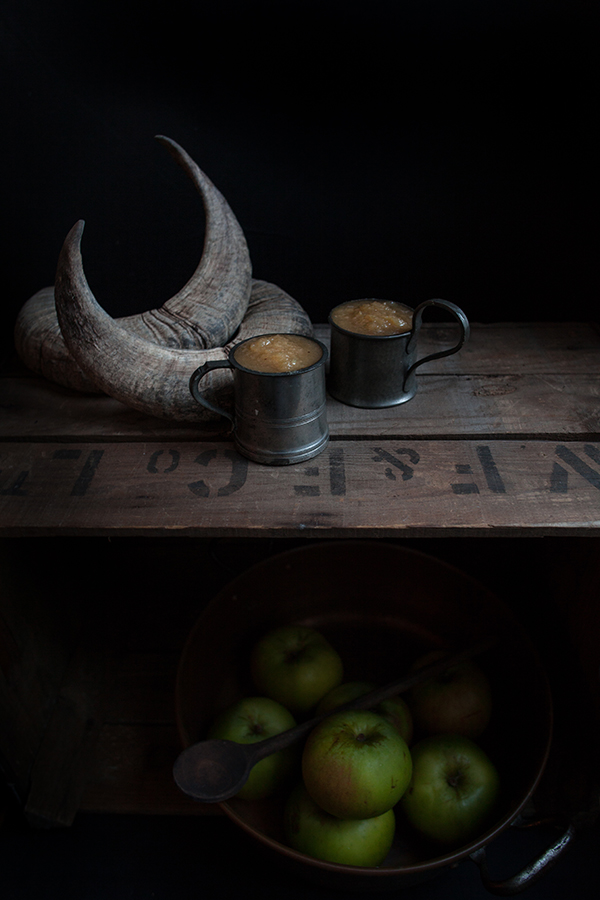
Although I was brought up with a lot of Pagan traditions, living in the city of Antwerp meant that some customs were harder to follow than others. As city dwellers far removed from any orchard or field, we were ignorant to the traditional rites surrounding harvest and sowing time. If there is no nature to honour, no field to gather around the cleansing fire, the feasting quickly becomes part of the past and forgotten.
Industrialisation has brought us wealth and the choice of matching shoes with handbags on a regular tuesday morning. It has brought the technical bits and bobs we all love and loathe. The big world has become smaller and the challenges bigger. The lucky few still live outside of the ever growing concrete cities. We follow their lives on Instagram with a sense of nostalgia, as if we have ever experienced living surrounded by trees and liberating fields and forests, and then tragically lost it.
But that is what it is, we have lost something, and most of us can feel it. There have never been more depressed people, nor have there ever been more people who are unhealthy because of their eating habits, eating too much rather than starving, but malnourished nonetheless. Our daily bread is soiled with adulteration, slowly making us ill. Animals are kept away from fields and live their ever shortening lives on the concrete floors of factory farms to keep the cost of your daily need low, fruit is left on the trees to rot because farmers can’t afford to harvest it, the price a farmer gets for his milk hasn’t gone up in 20 years (based on Belgian farms) so milk is being sprayed onto the soil of the farmland where the cows can no longer roam freely because of bureaucratic nonsense about fertilizer. Small scale generation long fishermen turn their boats into flower beds because the fishing quotas set out to protect fish stocks have made it so that only the big destructive factory fishing vessels can make a living, scooping up the fish only for part of it to be actually consumed and the rest turned into animal feed because their nets just catch too much for it all to be sold and cooked by us humans. The fisherman that could have made his day by catching one Dover Sole, now has to trow it back, while the big monsters take and take and kill the sustainable fishing industry.
We got lost as humans, because we lost part of our human nature.
Let today be an Epiphany.
The Epiphany is the Christian feast that concludes the twelve days of Christmas. In Pre-Christian pagan traditions this marks the time for Wassail. The practice of ‘wassailing’ meant singing and drinking in the apple orchards on the Twelfth Night to awaken the trees, to warn of the evil spirits and pray for a good harvest in the autumn. It could be that the feast of Wassail comes from the Celtic festival called ‘La Mas Ubhail’, the Feast of the Apple. Wassail comes from ‘waes hael’ meaning ‘be thou healthy’ or ‘be whole’, a salutation in Old English. During the feast these words would be addressed to each other and to the oldest apple tree in the orchard.
A drink traditional to Wassail is called ‘Lambswool’ and it is very possible that ‘La Mas Ubhail’ got phonetically Anglicised, to ‘Lamasool’ and later ‘Lambswool’. In historical books we often see that a lot of words were written down phonetically, resulting in a number of different ways to note down one single word.
Robert Herrick, a mid 17th century poet mentioned the custom of Wassailing and Lambswool in his poem about about Twelfth Night, we also get an idea of the recipe too:
Next crown the bowl full With gentle lamb’s wool Add sugar, nutmeg and ginger, With store of ale too; And thus ye must do To make a wassail a swinger
Give then to the king And queen wassailing : And though with ale ye be whet here, Yet part from hence As free from offence As when ye innocent met here.
The drink Lambswool is a mulled ale, poured over hot apple puree, although some people swear by whole apples, or apple pieces cooked in spiced cider or ale. However, as far as a drink goes, you can’t swallow a whole apple, nor can you swallow apple pieces so it is most probable that the recipe containing whole apples is just derived from the recipe made with apple puree. It is possible that the soft puree resembled a lambs fleece to people in the old days, resulting in giving it the name of what they associated it with, lambs wool.
Another reason for thinking that an apple puree was used it that this is the end of the season, so the apples which are left in times before refrigeration and fancy techniques to keep fruit from ripening, would not have been the prettiest of the bunch. An hot and spiced apple puree fortified with ale would be warming on a january evening, and would allow people to prepare it in a kettle rather than an oven which is used for the recipe with whole apples. Remember this is a country dish and ovens were a privilege for the well-to-do. But the sugar in the dish also tells us this wasn’t a drink for the poor, it could have been a special treat from the lord of the manor, or from the farmer to his farm labourers.
Last year I spoke to you about the intriguing Twelfth Cake, a fruit cake elaborately decorated with sugar or wax figurines which was also a privilege for the well-to-do. This cake, which is also mentioned by Herrick in his poem also started of as a humble ‘plum cake’ for the feast of Wassail. City folk picked up on it and adjusted the cake to their festive needs, making it the centrepiece of the table and causing queues in front of bakeries. Because it became popular in the city and with the wealthy, we get our first recipe for it in a 1803 book. A recipe for Lambswool is more difficult to find, as the drink remained in the countryside. So judging from the poem of Robert Herrick, I came up with this recipe for you.
Lambswool
serves 6-8
What do you need
- Bramley or Cox stewing apples, 500 gr (peeled and cored about 300 gr)
- water, 100 ml
- sugar 100 gr
- freshly grated nutmeg, 1 teaspoon
- ginger powder, 1 teaspoon
- a good ale, 750 ml
Method
Peel and cut your apples in small pieces and place in a pot along with 100 ml of water and the sugar and spices. Stew until soft and puree so there are no bits left.
When ready to serve, heat up the apple puree and add the ale while whisking. You should get a nice froth while doing so. Serve at ones.
Are you celebrating the Twelfth Night? Or are you having a slice of King cake, galette Du Roi or Driekoningen taart? Or are you wassailing and drinking Lambswool?
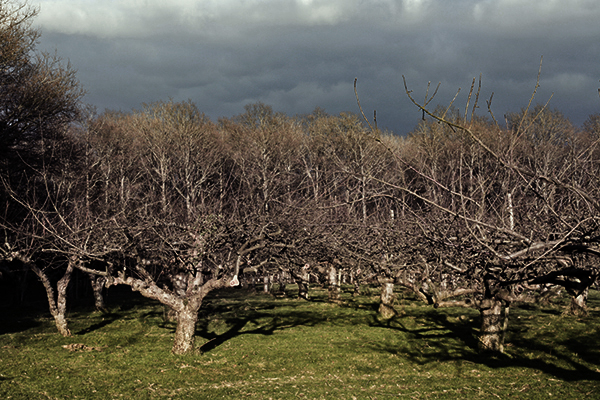 |
| Ancient apple trees in Sussex |
You might also like
Twelfth Cake for Twelfth Night >
The post We shall drink Lambswool on the Twelfth Night appeared first on Miss Foodwise.
]]>The post Medieval Chicken Compost appeared first on Miss Foodwise.
]]>Many people ask me if I come across weird and unappetising dishes in those old British cookery books I collect and devour.
Of course there are always recipes in historical cookery books which might seem odd to us today, but I am quite sure if someone from the 18th century would come and visit us today, he would go home with as much stories about strange foods to tell his contemporaries.
It’s all a difference in how we look at food, and how we approach it. For example, most of us only ever see meat, packed in plastic, neatly arranged in the supermarket shelves. Small independent butchers are disappearing on our streets and so is our connection to the animal that provides us with our much savoured sausage. Only last year a butcher shop in Suffolk was asked to remove his elaborate game displays from the window so children wouldn’t be upset by the sight of dead animals. Man has become disconnected and doesn’t think past the plastic surrounding the factory farmed meat.
I don’t find eating the head of a pig weird at all, people in the past would have been happy to have it. But today it is seen as ‘medieval’ and not very appetising. I must confess I do not have a desire to eat a pigs head any time soon, but many have told me it is exquisite.
I am talking about a Medieval dish with a name that might sound strange to us today, but only because we have given a different explanation to the word, or the word as evolved. Medieval dishes have always delighted me in their inventiveness, and elegance. A pure kind of cooking, with herbs and spices that give your tastebuds a whole other experience.
In the 14th and 15th century the dish with the name ‘compost’ has been the term for any stewed mixture. A ‘composition’ of ingredients. This could have been meat, vegetables or fruit. The French term ‘compote’ very likely derives from the English ‘compost’ which later only meant stewed fruits. The name ‘Compost’ for a recipe can also be found in Flemish Medieval cookery books.
To anyone, this dish must sound intriguing, especially as one would immediately think this was a recipe for creating the best compost to fertilise your veggie patch with.
But no, the etymology of the word might be obscure, we are not making any kind of compost for the garden today.
This recipe for ‘compost’ I am bringing to you today is made with chicken and green herbs, and spices. Another contemporary recipe is made with chickens and some of its offal. Herbs vary in recipes and another ‘compost’ is made exclusively from root vegetables, dried fruits and spices. They are all very clean and pure dishes.
Chicken was always a noble type of meat on a banquet. It was considered more economical if a chicken was kept for her eggs. Killing off a chicken meant killing of your egg factory so chicken would be on the tables of those who could miss a bird, the elite.
This dish is fantastic, it is so pure and simple, it is the kind of dish that just makes my heart skip a beat when I first have a little taste. The dish eats like a soup, and I like to add a nice slice of stale sourdough bread as a ‘sup’ – which was in the past frequently added to thicken the soup and give more substance. This ‘sup’ is also what gave us the term ‘supper’ later on in history. A ‘sup’ could also have been a piece of cake soaked in booze or sauce, the Italian word for trifle ‘Zuppa Inglese’ still gives shows us the link with the ‘sup’.
To make it into an evening meal I added some new potatoes. This of course not ver Medieval as the potato was not known in the Middle Ages, but it is a lovely addition to this dish.
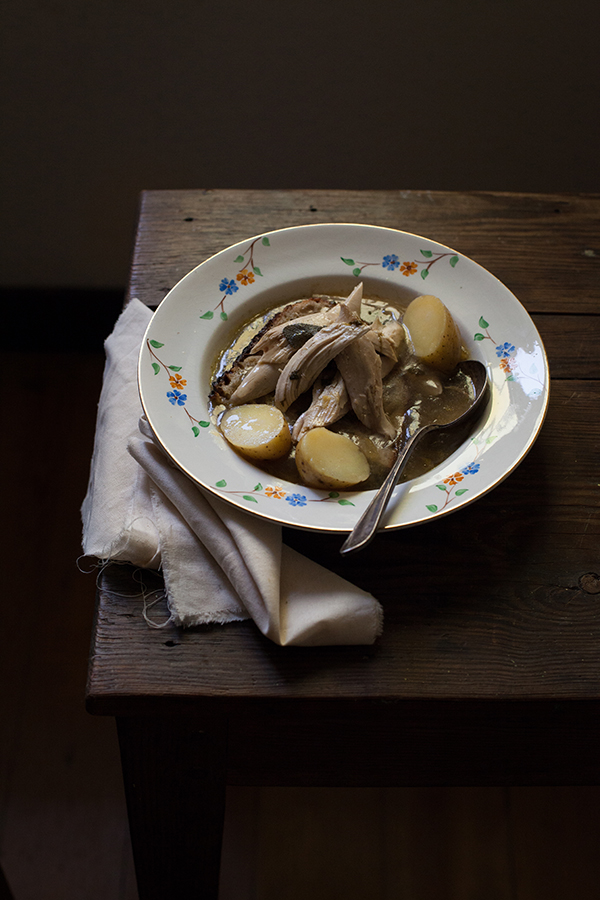 |
| New potatoes are a lovely addition to make it into a main dish, but not very Medieval. |
Original recipe from A Noble Boke off Cookry (England, 1468)
I brown my chicken before stewing, this isn’t done in the original Medieval recipe, but I find it improves the flavour and the look of the dish, I leave my chicken whole, but you can cut it in half if you prefer.
It might be so that the Medieval cook also browned the chicken, but recipes of that period weren’t complete as they were more often just aide-memoirs rather than clear instructions.
What do you need – serves 4 or 2 very hungry people with leftovers, it is very good the next day.
- 1 large hen, free range (please, if you can)
- 1 stalk of leek, chopped
- a bunch of parsley
- a bunch of sage
- a teaspoon of cinnamon, and one of ginger
- two large tablespoons of honey
- optional, some pieces of bacon fat, for flavour
- optional, stale bread, only decent sourdough or other artisan bread
Method
Preheat your oven to 160°C, you can do this just on the hob too, I just prefer to use the oven.
Have a big pot ready, large enough so you can cover the whole chicken with water, but small enough so it fits snugly.
In a frying pan, melt a generous knob of butter and brown your chicken slightly on each side. You just want some color, no crust or full browning. A medium flame on the hob is fine for this.
Place half the herbs and leek on the base of your pot, place your chicken on top and add the rest of the herbs.
Smear your chicken with the honey, doesn’t have to be neat.
Fill the pot with water so the chicken is completely covered, add the spices and give it a stir.
Bring to the boil and let it boil for 5-10 minutes without the lid.
Close the lid and transfer to the oven (or leave on the hob on a small flame) for 45 minutes – 1 hour. Cooking time depends on the size of your chicken, and the quality, a free range slowly grown bird cooks faster than a factory farmed chick. The meat should just not be falling of the bone, so keep an eye on it on those last 15 minutes.
Strain your broth using a colander or something similar, and take out your herbs and veg.
Then, take the meat of the bones and place in the broth. Place some or all of the herbs and veg back into the broth if you like, I do, as I like to eat the whole thing.
Have warmed soup plates ready and place a piece of bread in each of them, pour over the broth and give everyone some meat from the breast and some from the legs.
Serving tip: some nice cooked new potatoes work well to make this a main dish. It is very strengthening and ideal for winter, or on chilly summer evenings. It is also very nurturing when you are unwell.
You might also enjoy
Medieval mulled wine – Ypocras >
The poor man’s bread >
Sussex stewed Steak >
The post Medieval Chicken Compost appeared first on Miss Foodwise.
]]>